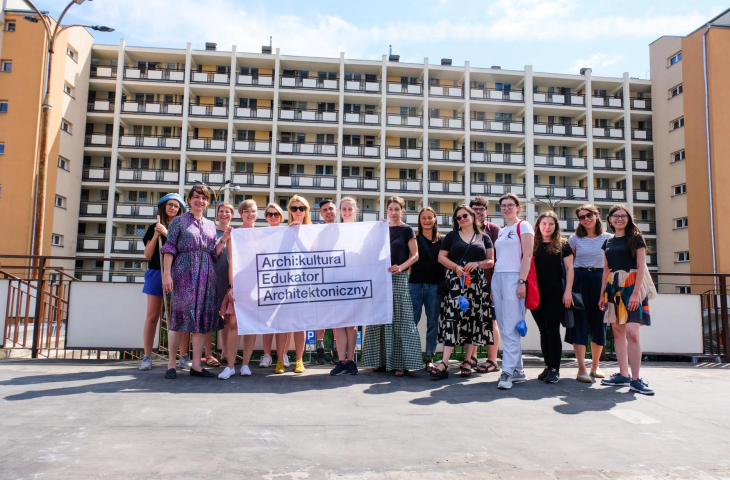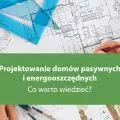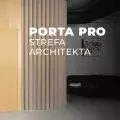Are you an idealist/idealist? Do you want to save the world? Or do you feel that your role is to be a "missionary of architecture"? We have something for you!
Recruitment is underway for the second edition of the postgraduate course "ARCHI:CULTURE - architectural educator " - an inter-institutional initiative created jointly by the Pedagogical University of Krakow, the National Institute of Architecture and Urban Planning and the Faculties of Architecture of the Krakow and Gdansk Universities of Technology. Dr. Dorota Wantuch-Matla, study leader (UP) and Katarzyna Domagalska, subject matter leader (NIAiU), talk about what can be learned in the classes and who they are aimed at.
Ola Kloc: Behind you is the first edition of the postgraduate course dedicated to architectural education, what thoughts accompany you after these two semesters?
Katarzyna Domagalska: It is very heartening to see that the people who participated and graduated from the studies have amazing ideas for implementing various activities in the field of architectural education. Initially, we considered at all among the organizers, coordinators or initiators of these studies - between the National Institute of Architecture and Urban Planning, the Pedagogical University of Krakow and the Faculties of Architecture of the Technical Universities of Gdansk and Krakow - to make two tracks: architectural mediators, i.e., people interested in working with local governments or working with residents, a block more strongly oriented to learning about participation tools, urban processes and urban planning, and aa path focused on working with children, working in schools, in cultural institutions, where there would be more emphasis on conducting workshops, that is, typical education, in this context on general architectural education. It turned out that the theses that students presented at their defenses address both of these topics, and they are extremely interesting and extensive. On the one hand, there were programs on working with children and teachers, that is, programs dedicated to schools, and on the other hand, programs for residents, including those in smaller cities, involving the local community in activities around space, architecture, in building local identity.
Verification of the program is actually still ahead of us, but I think that what is there, that is, the educational-participatory program blocks, this dialogue between design and pedagogy, is working. Perhaps these two tracks - educators and mediators - is some future to think about dividing students into two groups, but I think everything has worked so far, because the projects are sensational! They do not so much have a chance to exist, but are already starting to be implemented and put into practice.
participants of the convention in Warsaw
Photo: A. Czarnota © organizers' archives
Ola: And how did the idea for such a field of study come about in the first place?
Dorota Wantuch-Matla: Referring to what Kasia said, the first edition of the study was a kind of vivisection, activities that we programmed and conducted somewhat intuitively from the very beginning. The whole concept of postgraduate studies was born among the general architectural education team at NIAiU. From various conversations, discussed threads, the concept of what would happen if we started to organize courses began to forge. Then we concluded that maybe not courses, but studies, so that it would be more "meaty", have a structure, a program and end with a diploma, a work that would not only have theoretical value, but also practical.
Ola: Tell us, please, a little more about the theses prepared by the students.
Dorota: As Kasia mentioned, the works were diverse, very elaborate. This also surprised us, as it did many things during this first edition of the study. Many of the theses turned out to be complex programs. That's how it was supposed to look in our assumptions, by the way, this thesis was supposed to be a program of educational activities, but I don't think we expected that so many of the works presented would not be mere concepts, but real activities. Many of our listeners have already found funding for their projects, communicated with various institutions, established contacts or even started some kind of action that is part of a broader process. We will look to see how this develops, and we want to keep in touch with people who are or will be postgraduates. Our dream is to create a kind of platform of contacts between all the people who took part in these studies and people who will be listeners of the next editions, to exchange this knowledge and experience all the time, to build a network of contacts.
So we had a sketch in our heads of how the study process was going to turn out, but the results surprised us.
Catherine: I also think we were surprised by the scale of the works.
Dorota: Yes, not all of them either, of course, but all of them were interesting, they had a different range. So it was, as I mentioned, a kind of vivisection. Similarly, in terms of the program.
convention in Warsaw
Photo: A. Czarnota © organizers' archives
Ola: Do you already have any thoughts on how the studies were conducted? Does anything in the program need to be changed?
Dorota: This is still ahead of us. Due to the fact that the studies are conducted at the university, there is quite an intricate mechanism behind them, and changes in the program must take place in a thoughtful way, according to procedures. But we definitely have different thoughts on the subject. During the holiday season we gave ourselves a little time to process what was happening and what is happening, the first edition will actually have an end in September. We are planning a graduation ceremony in early October. However, we are already trying to catch a distance and think it over calmly, so that some corrections and changes can be taken into account in the next edition, which will hopefully start.
The study was intended to be hybrid, a little helped or forced us to do so by the pandemic, online classes became a reality during this period. Before that, no one thought about it, because how to conduct classes without contact. It turns out that this contact can be built to some extent, of course it's not ideal, but it gives people from very different places in the country the opportunity to access learning.
Katarzyna: Our idea was that we have Gdansk, Cracow and Warsaw, that is north, south and center, to facilitate access for people from all over Poland. And as Dorota said, the pandemic forced a hybrid study formula, but it worked, a lot of people from smaller centers, scattered all over the country, enrolled in classes. And on the other hand, stationary conventions organized in three cities were also apt, students could choose a location convenient for them.
convention in Cracow
© organizers archive
Dorota: To make it not so colorful again, I'd like to add that yes, the online classes did work, but at the same time there were a lot of voices (we had ongoing conversations with our students, did organizational meetings, evaluation surveys, tried to keep our hand on thepulse and ask for feedback) that yes it works, for many reasons, including logistical for those people who had to switch off for a whole weekend once a month, but it would be great to meet nonetheless. Even we, as presenters, were also short of this meeting. And here in succor came the reunions, actually one organized simultaneously in three locations, and it was a hit! The pressure was mounting, we knew that there were so many months of remote work behind us and that when we finally met, it would be great, and actually I think it was. In order to satisfy this need to meet in the next edition of the study, we obtained a grant from the Ministry of Culture to organize an additional convention, and we are going to start the next academic year with it. I think it will be a significant change.
Catherine: Networking, the need to share experiences, was also important during the reunions. It turned out that people who have online classes already form some kind of community, there is a Facebook group where people from different places in Poland contact each other. At the convention they were able to see each other in person, and it actually played nicely. A common environment was forming, this "archiculture." I'll also mention that at our NIAiU there is a Platform for Education(ADE), a network that not only students, but also people who are involved in architectural education can join. We are creating a database of architectural educators there. Architects for education, education for architecture.
Ola: Who participated in the first edition of the study? Were they people previously involved in architecture or education?
Dorota: In recruiting for the first edition, it turned out that people came to us from all over Poland, representing different disciplines and embedded in very different and interesting professional contexts, and 1/3 of the students were architects, which positively surprised us.
Catherine: In the architectural community there is perhaps this need to share knowledge. The name of the study includes the word "archiculture," which hooks into the German concept of Baukultur, so the question is, is it about culture or building? Are architects going more in the direction of an engineer or a person building culture? The emphasis on the awareness of participation in building culture, shaping the environment should perhaps be greater in design studies. Certainly there is a need to understand the word "architecture" or "creation of architecture" as the foundation for creating culture.
Dorota: To our great joy, we also have a wide age range among the audience, from people out of college to people who are professionally active 40-year-olds and above. Yet all young in spirit! There were people from different backgrounds, from municipal or research institutions dealing with the city, people coming from different disciplines, and quite a few people from various cultural institutions or who want to act as freelancers. The diversity we encountered, these characters, people, perspectives, and how different parts of the country they came from, contributed a lot to this study. The feedback energy of the participants and the exchange of experiences, information, knowledge is a huge added value, an important element. It is a two-way experience, not only do we "emit" knowledge, but by coming into contact with these people, a community is formed from which we mutually benefit.
classes during the convention in Krakow
© organizers archive
Ola: What tools do you want to "equip" students, future architectural educators with? With what skills do they graduate?
Catherine: A lot of emphasis has been put on understanding the process of participation, on learning all the tools that function in the city and in projects that assume civic cooperation, with residents, but also learning about the process, i.e. responding to the needs of residents, talking to them, how to work with residents talking about local identity, heritage or neighborhood, the place where we live. Another interesting tool we pass on to students is new technologies, which we can also use in education or in talking to local authorities and the local environment, that is, using VR techniques or working with social media. And also what I keep repeating, that is, the design-pedagogical dialogue - on the one hand, supplementing the knowledge of the basics of architecture and urban planning, and on the other hand , pedagogical assistance, that is, the methodology of conducting classes with children, with young people, with adults, in which we are supported by specialists from the Pedagogical University.
As Dorota mentioned, the idea for the study was born in the existing team at the institute for general architectural education. This team was established so that threads about architecture and the city would consciously appear in the Polish education system. Thus, the studies develop this idea - on the one hand, to impart knowledge about architecture and urban planning to the youngest and young people, and on the other hand, tools for the skillful use of communicating with the neighbor, with the resident, with the local government at work.
congress in Gdansk
© organizers archive
Dorota: I would still like to mention this connection of architectural and pedagogical threads. The study program is divided into modules, they focus on different architectural revues, but also enter into educational and participatory threads. As for the educational threads, we have great specialists who deal with pedagogy, didactics in different age and social groups at the Pedagogical University. And this knowledge in a nutshell is passed on to our students, including information on where they can possibly deepen it. Most often it is the case that general architectural education is associated with children, with classes in schools. One of our goals is that the knowledge of space, of the city, of the relationship around us, between built space and human beings, should be more consciously received, so that people try to perceive these relationships and understand them better. Ideally, it would spread precisely through schools, at the pre-school, elementary, high school stages. However, universal education is not only for children, but also for other social groups - adults, seniors, in fact, at every stage of life a person is in constant contact with the environment, always moving in some space, co-shaping it or influencing it as an inhabitant. The perspective of educators or didacticians gives knowledge of how to adapt this communication to the ability to perceive or understand reality at different age ceilings, in different social groups and in different configurations. So we also teach certain skills regarding interpersonal communication.
Catherine: Communication is also an important tool that can be used in architectural mediation. Conversations about architecture are often a flashpoint, maybe not always to conflicts, but situations where the opinions of the stakeholders do not coincide. In such situations, what is needed is this tool of communication, the culture of language and transmission of information, the ability to read development plans, draw on knowledge and pass it on in an informed and simple, more understandable way.
Dorota: Yes, simple and at the same time adequate! If we know - and this is what our listeners learn - what are the cognitive capacities of different age groups, where and how we can communicate something, how we can communicate so that we don't create a hermetic atmosphere and so that we can transmit this knowledge more comprehensibly.
Catherine: Dialogue and communication are needed before the activities, before the intervention. Our goal is that this architecture, urban planning, urban planning or city design should not be a secret knowledge only for a few.
Dorota: So that this information is not communicated in an industry-imposing way, but in an atmosphere of mutual dialogue. Moreover, we ourselves, as "transmitters" of certain trends, inspiration and knowledge, must also be able to listen. However, there is no need to count on the fact that everyone will always listen to us with unreserved admiration, because often such meetings, especially in terms of participation, are an open conflict. And over such a conflict you need to know how to control it, how to skillfully guide participants through such a situation.
Katarzyna: In our studies we have practitioners who teach classes on participation, but also on the process of participatory design, involving residents in design.
Dorota: We also have classes on different teaching methods, purely pedagogical issues.
participants of the convention in Krakow
© organizers archive
Ola: The next recruitment for ARCHI:CULTURE - architectural educator studies is underway, why is it worth taking part? Try to encourage our male and female readers! [More information about recruitment can be found here]
Catherine: I would like to encourage all people who work in the field of education, whether architectural, or in general are interested in education, knowledge transfer, because it is an excellent opportunity to get to know the environment and share experiences, meet people who are also turned on by architecture and the space around us, discuss the subject, share their knowledge. The study is aimed at a wide range of people who want to learn more about the possibilities of cooperation and the ability to communicate, to spread their knowledge of architecture and building culture. We give them the tools to help them act in this field. We also put a lot of emphasis on the practice of participatory design and working with children, those educational activities.
It is also important that our conventions are held in very attractive places. This year, under the theme "Narrative - Experiment - Interpretation," we visited Gdansk with the World War II Museum, where, during a meeting with designers, with practitioners, participants observed the combination of history with its contemporary interpretation, Krakow with the Nowa Huta, where discussions took place on cultural heritage understood as architectural and urban heritage, and Warsaw, or rather Szumin, the Hansens' work with their didactic, design experiment.
The Warsaw convention was held in Szumin, where participants were able to learn about the Hansens' work
photo: A. Czarnota © organizers' archives
Dorota: And at this point in the conversation, I will also remind you why we initiate these studies at all. So that more and more and as professionally as possible, and at the same time in an accessible way, we can talk about what kind of environment we live in, what its quality is, and how we can influence to improve this quality, if only in our immediate surroundings. But not only that, because it sounds like we're only concerned with aesthetics, and we're not - we've had a lot of problems around for decades, which are now more audible, have broken through to the mainstream: problems with the environment, resulting from our destructive impact on it. Educators who sensitize us to how we treat our environment through culture or precisely the scarcity and lack of a building culture are badly needed. This seems to be the last moment when we as a society can begin to pay attention to these relationships and the shaping of the environment around us to stop the destruction we have probably initiated ourselves. Maybe we can improve, protect and help this environment so that it can continue to please future generations for a long time to come. These studies and similar activities should serve exactly that purpose. That is, to our studies we invite everyone who cares about the environment and who wants to save the world... [laughter].
Catherine: Yes! The first edition was attended by people who are idealists.
Dorota: [laughter] Yes, we invite you if you want to save the world and at the same time meet practitioners, architects, urban planners, but also artists, educators, didacticians, experience architecturally interesting places and have the need to share your knowledge and passion with others.
Catherine: These are studies for missionaries of architecture!
Dorota: It sounds quite funny, but it is a bit like that. Idealism is the foundation of these studies, it can't be excluded. But it is, nevertheless, an idealism well-supported by concrete.
participants of the convention in Warsaw
Photo: A. Czarnota © organizers' archives
Ola: Thank you for the interview!














































